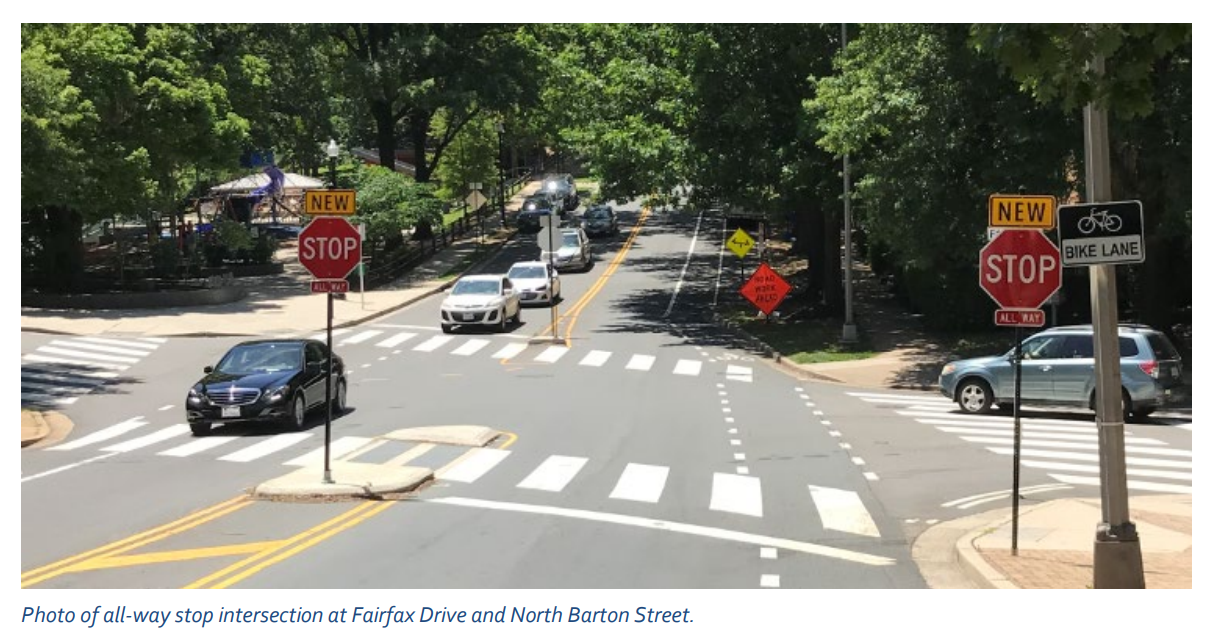Stop Sign Control
Purpose
Indicates where traffic is required to stop at an intersection before proceeding.
Description
A STOP sign is a regulatory sign, which are governed by the MUTCD, that indicates where traffic is required to stop. At stop-controlled intersections, drivers must yield the right of way to people walking, rolling, and biking, as well as other drivers before proceeding.
Safety Benefits
- Organizes the right of way for all street users at an intersection.
- Can reduce the amount of time people must wait to cross streets.
- Can reduce encroachment by drivers into crosswalks when implemented with stop bars i.e., markings that indicate where drivers should stop.
Street Types and Context
Applicable Street Types
Local Principal and Local Minor streets in all contexts. Can also be applied on Minor Arterial streets where recommended by analysis. Applied when specific requirements are met; refer to the MUTCD and the Arlington County Warrants for Multiway Stop Signs for warrant information. (See references below.)
Other Location Guidance
- May be installed on any or all legs of an intersection.
- Where a minor street intersects with a major street, it is common to install STOP signs only on the minor street (two-way stop).
- Stop-control becomes less practical when traffic is at a level where extensive queuing occurs.
Primary User Groups

Key Implementation Considerations
- STOP signs should not be used to control speeds or traffic volumes.
- When located along a street with traffic signals, STOP signs can sometimes change the flow of vehicle traffic, making it harder for people walking and bicycling to find a gap in traffic to cross the street.
- STOP signs should be accompanied with a stop line (Arlington County policy implemented in 2020).
- Intersections controlled by a YIELD sign are typically replaced by a STOP sign when a street is repaved (Arlington County Policy).
- Implementation must meet MUTCD standards and Arlington County Warrants.
Expected Crash Reduction
A crash reduction factor of 22% has been established for installing a STOP sign on both minor approaches of an unsignalized intersection (Haleem and Abdel-Aty, 2010).
Cost

Typically, a lower cost treatment.
Timeline

Typically, a quick installation treatment.
Application in Arlington
Visit Vision Zero Program Dashboard: AWS to see where this tool has been implemented.
Vision Zero Dashboard
References
